DreamWorks Animation is best known for the Shrek franchise, which they followed up with Over the Hedge, Madagascar, Flushed Away, and the Bee Movie.
They were the first CGI animation company to release two features in a single year. At any given time they have as many as five films in development. Jeffrey Katzenberg, the “K” in DreamWorks SKG has said, “Walt Disney made movies for the child in every adult. We make movies for the adult in every child.”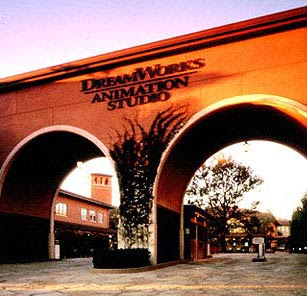
DreamWorks Animation occupies two campuses, one in southern California, and one in the Bay Area of northern California, linked with a high tech video conferencing system. Both campuses have designers, animators and technical wizards, but the architecture and atmosphere of the campuses is quite different.
The southern campus in Glendale is Spanish style, with fountains, goldfish ponds, tile floors, and arched hallways. The northern facility, called PDI DreamWorks, occupies a modern but attractive building overlooking the baylands of Redwood City. We arrived early, and I did a quick watercolor study of the industrial architecture nearby, which I have a fondness for.The studio works hard to create a “culture of mentorship” at both campuses, with free classes offered after hours in life drawing and character design. There’s a hallway space called the “Blue Sky Gallery” where artists can show other facets of their creative life beyond what they do from 9 to 5. Breakfast and lunch are free, and we were told that most new hires gain ten pounds in the first month or two. Free food! I gained five pounds just at lunch!
A huge visual research library (above) is available on campus. Each film takes about four years in the pipeline. “Each project has its own aesthetic,” explained John Tarnoff, head of Outreach, “and it grows out of its story and characters.”
 After my presentation I was honored to meet many of the DreamWorks artists, including Shane Prigmore. He did the sketch above just for fun in a character design class where the assignment was to imagine how Ronald Searle would draw Conan.
After my presentation I was honored to meet many of the DreamWorks artists, including Shane Prigmore. He did the sketch above just for fun in a character design class where the assignment was to imagine how Ronald Searle would draw Conan.
I also met artist Nathan Fowkes (below), whose "color keys" help establish the mood and lighting of the show—in this case Shrek the Halls. Other artists bring a different range of talents to the production process: modeling, rigging, texturing, lighting, and effects. “One of the strengths of our production process,” John Tarnoff said, “is our facial animation system.”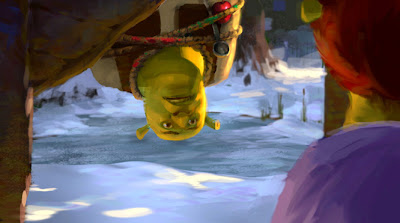 Students who are interested in working at DreamWorks animation might want to keep a couple of things in mind. I asked John Tarnoff what skill sets are not always covered in art schools. “Any visual designer who wants to be in this business,” he said, “needs to know what writing is about: motivation, characterization, and plot. The zeitgeist of this company is that we’re all storytellers.”
Students who are interested in working at DreamWorks animation might want to keep a couple of things in mind. I asked John Tarnoff what skill sets are not always covered in art schools. “Any visual designer who wants to be in this business,” he said, “needs to know what writing is about: motivation, characterization, and plot. The zeitgeist of this company is that we’re all storytellers.”Jim Conrads, my host in the northern California studio answered the same question differently. He felt that artists need to develop the social skills: teamwork, compromise, and respect for others’ points of view. “Artists are usually taught to come up with their own personal expression,” he said, “but rarely encouraged to carry out another’s vision or blend with another’s style.” Below: The Redwood City campus of PDI DreamWorks.
 And the portfolio you present should go beyond the common cliches of fantasy art. Kathy Altieri, head of Show Development, told me that she gives a presentation at art schools called “Chicks and Guns,” to make the point that you need to show a lot more than sexy girls and weapons. Your portfolio will stand out if you can draw all kinds of architecture, costumes, animals, and characters.
And the portfolio you present should go beyond the common cliches of fantasy art. Kathy Altieri, head of Show Development, told me that she gives a presentation at art schools called “Chicks and Guns,” to make the point that you need to show a lot more than sexy girls and weapons. Your portfolio will stand out if you can draw all kinds of architecture, costumes, animals, and characters.Thanks to everyone at both campuses, and best wishes on your ongoing projects.
Some photos of facilities courtesy DreamWorks.
Viewing: Blog Posts Tagged with: I grew up with a bunch of sisters, Most Recent at Top [Help]
Results 1 - 25 of 29
Blog: Gurney Journey (Login to Add to MyJacketFlap)
JacketFlap tags: road tour, Movie Studios, Add a tag
Blog: Gurney Journey (Login to Add to MyJacketFlap)
JacketFlap tags: road tour, Movie Studios, Add a tag
Creating lifelike digital animals is one of the greatest challenges for CGI artists. We’ve all seen film footage of real penguins, pigs and polar bears, so our eyes can instantly recognize anything that doesn’t ring true. That makes the accomplishments of the team at Rhythm and Hues all the more remarkable.
That makes the accomplishments of the team at Rhythm and Hues all the more remarkable.
Founded by John Hughes and Pauline Ts’o (below, left), they created award-winning special effects for films like Golden Compass, Night at the Museum, Narnia, Charlotte’s Web, and Babe. Rhythm and Hues is a complete digital studio, with not only post-production FX, but also CG animation (such as Happy Feet), and a range of design services.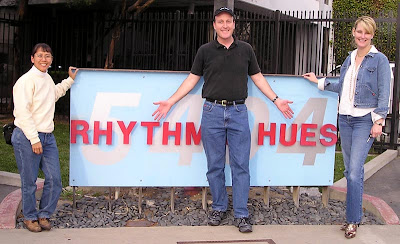 We toured the campus, housed in a 70,000 square foot building in west LA, just north of the airport. The facility includes a sound stage, screening room, work areas for the animators, and conference rooms, all brimming over with works in progress. In the center of the building is a light-filled open stairway that serves as a mixing place for workers as they go about their day.
We toured the campus, housed in a 70,000 square foot building in west LA, just north of the airport. The facility includes a sound stage, screening room, work areas for the animators, and conference rooms, all brimming over with works in progress. In the center of the building is a light-filled open stairway that serves as a mixing place for workers as they go about their day.
Huge rooms filled with humming computers do the vast amount of rendering work. The founders, Mr. Hughes and Ms. Ts’o, are each a remarkable combination of business-person, technical-wizard, and art-lover. Their original art collection includes drawings by great Disney animators, Garth Williams, and Jules Feiffer.
The founders, Mr. Hughes and Ms. Ts’o, are each a remarkable combination of business-person, technical-wizard, and art-lover. Their original art collection includes drawings by great Disney animators, Garth Williams, and Jules Feiffer. They have clearly worked hard to attract and keep some of the best talent in the industry. Stacy Burstin, our host, travels to art schools and software conventions to recruit top talent. Animators are allowed to bring their dogs to work, so many of the cubicles have child gates with a canine companion at the artists’ feet.
They have clearly worked hard to attract and keep some of the best talent in the industry. Stacy Burstin, our host, travels to art schools and software conventions to recruit top talent. Animators are allowed to bring their dogs to work, so many of the cubicles have child gates with a canine companion at the artists’ feet. After seeing a collection of gorgeous original production paintings and sculpted maquettes, I was a little disappointed to learn that both the painting and the sculpting have all gone digital, and physical sculptures of the characters are no longer necessary. But that seems to be true at all the movie houses we visited.
After seeing a collection of gorgeous original production paintings and sculpted maquettes, I was a little disappointed to learn that both the painting and the sculpting have all gone digital, and physical sculptures of the characters are no longer necessary. But that seems to be true at all the movie houses we visited.
It was a real honor to meet so many of the artists and specialists after my Dinotopia presentation, and I congratulate them on their magnificent work.
Blog: Gurney Journey (Login to Add to MyJacketFlap)
JacketFlap tags: road tour, Add a tag
 We finished up the Dinotopia tour in Seattle, returning the rental car and boarding a jet back home. From my window I could see America was completely covered from head to toe with a blanket of clouds.
We finished up the Dinotopia tour in Seattle, returning the rental car and boarding a jet back home. From my window I could see America was completely covered from head to toe with a blanket of clouds.
A mix-up with the tickets put us into LaGuardia instead of Stewart Newburgh, so we had to rent another car and drive all night to return to Trusty Rusty.She was buried somewhere under a foot of snow. Where did we leave her?
Now we're digging out from other piles at home. To our friends and family: I hope you'll understand if we don't send Christmas cards this year. To our mail-order customers: most orders already shipped today, and the rest will go out Saturday and Monday.
To all our hosts at bookstores, movie studios, and art schools: thank you for your hospitality and generosity, and please forgive us for not being able to linger longer. To all the readers of the Dinotopia books: I really appreciate your support; there would be no more books without it. To my wonderful publisher, Andrews McMeel, thanks for helping with all the myriad details of the tour.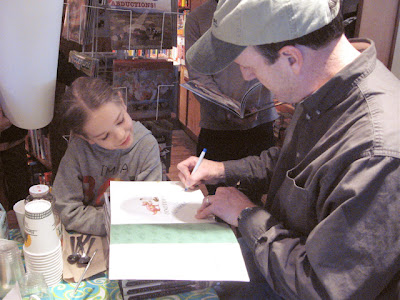 And to all my fellow artists on this blog, both students and professionals: thanks for your interest in all the oddball topics of this journey and I'm grateful for your fascinating feedback. Even though I'm back in New York, the journey is not over, and I'll keep on blogging. I'll continue to do new posts and flashback reports about the West Coast.
And to all my fellow artists on this blog, both students and professionals: thanks for your interest in all the oddball topics of this journey and I'm grateful for your fascinating feedback. Even though I'm back in New York, the journey is not over, and I'll keep on blogging. I'll continue to do new posts and flashback reports about the West Coast.
Blog: Gurney Journey (Login to Add to MyJacketFlap)
JacketFlap tags: road tour, Movie Studios, Add a tag
A cluster of seven unmarked buildings in Culver City is the home of some of the most eye-popping visual effects in the movie business. Sony Imageworks has created visual effects for films like Spiderman 3, Stuart Little, and Starship Troopers.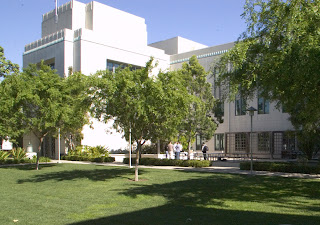 This is also the headquarters of Sony Pictures Animation, one of the major players in the field of CGI animation, who recently created Surf’s Up and Open Season. The animation division was set up starting in 2002 after the success of the ChubbChubbs.
This is also the headquarters of Sony Pictures Animation, one of the major players in the field of CGI animation, who recently created Surf’s Up and Open Season. The animation division was set up starting in 2002 after the success of the ChubbChubbs.
As a fee-for-service post-production FX company, Sony does straight 2-D visual effects and 3-D character work, the latter including such tasks as creating a virtual Toby McGuire as a stand in for the real actor when he’s called upon to do dangerous stunts. Sony has also been a pioneer in the controversial technique of motion capture, or as they call it “performance capture” in such films as Polar Express and Beowulf, developing a new art form that bridges the boundary between live action and animation.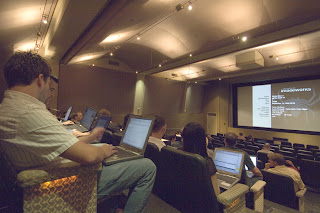 Sony Pictures Animation, or “SPA,” as it is known here, has its own in-house visual development department, which hammers out the story and crafts the look of the characters and environments. The rigging, animation, surfacing and lighting are then handled by the Imageworks team next door. Their artists have to cover the gamut from photo-real live action effects to the caricatured world of CGI animation. The huge demands on the computers to render all this material requires 4000 processors, and up to a petabyte of memory.
Sony Pictures Animation, or “SPA,” as it is known here, has its own in-house visual development department, which hammers out the story and crafts the look of the characters and environments. The rigging, animation, surfacing and lighting are then handled by the Imageworks team next door. Their artists have to cover the gamut from photo-real live action effects to the caricatured world of CGI animation. The huge demands on the computers to render all this material requires 4000 processors, and up to a petabyte of memory.The talent pool thus ranges from artist/designers to software specialists. We toured both facilities before and after my presentation, and I had a chance to meet SPA’s visual development legends like Richard Chavez, Luc Desmarchelier, and Ron Lukas, who, along with Paul Lasaine, are busy creating environments and characters for a variety of new shows in development.
The visual effects team has developed sophisticated tools to create photo-real water, fire, and fabric, all of which has been a challenge to model convincingly in CG. For Surf’s Up, they not only had to create realistic breaking waves, but set up a control system so they could curl and crash on cue. In-house software engineers have developed proprietary tools for fur and fabric. “Cloth has come a long way, too,” said our host Steve Prawat.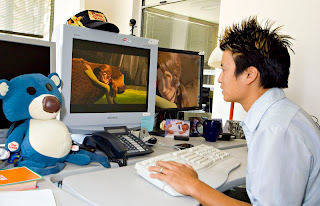 Sande Scoredos, the director of training and artistic development, said that new hires spend two weeks in training, with a whole regimen of classes. They’re given a practice shot to animate, basically a digital puppet figure in a virtual room, and if they can meet the requirements, they get “crewed.”
Sande Scoredos, the director of training and artistic development, said that new hires spend two weeks in training, with a whole regimen of classes. They’re given a practice shot to animate, basically a digital puppet figure in a virtual room, and if they can meet the requirements, they get “crewed.”
Like all CGI animation companies, Sony works hard to keep its 900-1400 artists happy and learning. They offer free classes in life drawing and acting, bring in live falcons, take trips to art museums, and present lectures by cinematographers, classic animators like Chuck Jones—and author/illustrators like me. “We have a program in place for people who want to go up the career path,” said Mr. Prawat.As I signed the artist wall, I felt honored to be a guest at a studio with such a respected artistic legacy. It’s an exciting career indeed for young artists to consider.
Some images provided by Sony Imageworks.
Blog: Gurney Journey (Login to Add to MyJacketFlap)
JacketFlap tags: road tour, Art Schools, Add a tag
Academy of Art University occupies a series of separate buildings scattered throughout the steep streets of San Francisco near Union Square. I visited two of those buildings: the performance hall in a converted church, below, where I gave my Dinotopia slide presentation, and the illustration and animation building around the corner.It’s a big school. In the illustration major alone, there are 900 students enrolled in the graduate and undergraduate levels out of a student body of 12,000. Every student and every teacher we met seemed to have a genuine zeal for their work and an affection for each other.
Like the other two west coast schools we visited, (Art Center and SJSU), AAU has responded to the growth of the video game and CGI animation business by building a first-rate course of study for animation, storyboarding, and visual development—or to use the current lingo: “vis dev.”
This cutting-edge curriculum is founded on traditional knowledge and skill at drawing and sculpting the figure, with an emphasis on story and character. “The ability to think with a pencil is the core of surviving in a 3D world,” illustration director Chuck Pyle told me. “We’re not here to train them for today or tomorrow. We want to give our students the skill set they can use forty years out.”
We visited a class that was drawing from the costumed model in a high-ceilinged top-floor ballroom. Students clustered around a pair of models dressed in the theme of a doctor and his patient. They drew what they observed within the 20-minute poses, but also used their imaginations to elaborate the characterizations.
Other themes have included Knights, Witches, and Barbarians. Clothing and costume are a key part of the training, taught by Lisa Berrett and Barbara Bradley, the latter a veteran of the famous Cooper Studios.There’s a class in maquette building, with gray clay models (above) of imaginative cartoon characters. We also looked in on a class of traditional drawn animation.
For those of you who are chemically sensitive to oil solvents, you might be interested that AAU has state of the art ventilation and waste disposal technology.
Students can take a sculpture course where they build the figure from the bones outward. Legendary ILM creature designer Terryl Whitlatch teaches animal drawing. Once she brought in live ocelots. European-trained figure drawing master James X. Barbour teaches a whole course in drawing the head and hands.The school is particularly strong in teaching the history of illustration. Instructors can borrow original art from the teaching collection, which includes works by illustrators from the last five decades. Unlike many art schools, where the ability to teach illustration history is controlled and hampered by snobby art history department admistrators, AAU lets Steve Kloepfer, one of America’s foremost experts, teach a whole course on the subject.
As I signed books after my talk, I had a strong feeling that I will be hearing again from each of the students five years from now, from the point of view of their successful positions inside the industry or out there as published illustrators.
To all my new—and old— friends at AAU, congratulations and best wishes!
Blog: Gurney Journey (Login to Add to MyJacketFlap)
JacketFlap tags: road tour, Add a tag
Hey! Shrek and Donkey are living in the redwood country of northern California.
But where is Bigfoot? It's a mystery. There are lots of rumors, but they're confusing.
If I see Bigfoot I will do a drawing of him. Is that Mrs. Bigfoot? With a female like that, the species would never continue.
Maybe I should ask this guy.
I'm in despair at this point. Perhaps Bigfoot does not exist.
Hooray! Jeanette found him.
Blog: Gurney Journey (Login to Add to MyJacketFlap)
JacketFlap tags: road tour, Art Schools, Add a tag
At San Jose State University, every student majoring in illustration learns how to animate. The four-year program at this public university just south of the San Francisco Bay includes the traditional practice of creating flat illustrations for print, but it also covers acting, lighting, and creature design skills needed for the burgeoning fields of CGI and interactive. Illustration/Animation chairman Alice Carter, herself a well-known illustrator and author, helped design the new curriculum. “Twelve years ago,” she told me, “we saw the business change. Print was gone, and it was being replaced by video games and CGI animation. We stripped down the program to just drawing.” SJSU began teaching how to sculpt maquettes, how to draw backgrounds, and how to develop a narrative with a storyboard.
Illustration/Animation chairman Alice Carter, herself a well-known illustrator and author, helped design the new curriculum. “Twelve years ago,” she told me, “we saw the business change. Print was gone, and it was being replaced by video games and CGI animation. We stripped down the program to just drawing.” SJSU began teaching how to sculpt maquettes, how to draw backgrounds, and how to develop a narrative with a storyboard.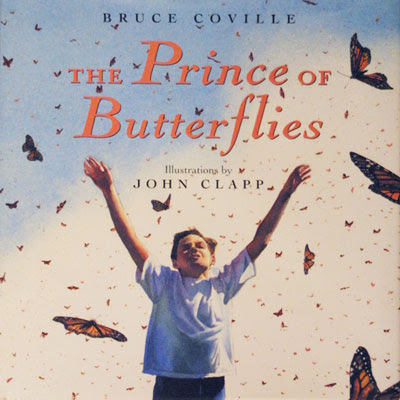 We met John Clapp, (book cover above), one of the professionals from illustration faculty.
We met John Clapp, (book cover above), one of the professionals from illustration faculty.
Alice "Bunny" Carter walked us through the art building and showed us the impressive senior portfolio booklets, each of which looks like an “Art of” production design handbook. “We teach the exact same thing in every class,” she said, “gesture, construction, anatomy, and technique—in that order of importance. Our emphasis is drawing. We teach figure drawing in every class.” Students have a sketchbook assignment to draw fifty trees and fifty windows. They go to the zoo to draw animals from life.
Students also learn computer graphics skills once they’ve got a handle on drawing, but “we don’t give application courses, except for Maya.” Ms. Carter admitted that graduating students don’t have as much time to spend with painting and color as they’d like, but they’ve only got four years.There’s no portfolio entrance requirement; everyone is admitted, but midway through their period of study, students have to pass a review. Once they do, the older students give them a t-shirt and welcome them into the “Shrunken Head Club.”
The big players in the industry, like DreamWorks, EA, and Pixar, have taken notice. We looked into a classroom where students were sharing animation pencil tests via a video link with professionals at Disney. Recruiters regularly pick off the graduates. Almost 100% of them are hired.
Jeffrey Katzenberg of DreamWorks recently announced a six-figure donation to help build the animation program even more. The grant is welcome in a public institution that is a bit strained for resources. Tuition is one of the lowest of the schools we’ve visited. As a result of the tight funds, the computer rooms and cafeteria are crowded.I shared my Dinotopia presentation with a group of over 200 students packed into a double classroom. At supper later, Alice said she often hears illustrators back east complaining about the declining field of magazine illustration. But she sees the industry with fresh eyes. “We’re committed to visual development, and now we’re known for it. This is the new golden age of illustration.”
Blog: Gurney Journey (Login to Add to MyJacketFlap)
JacketFlap tags: road tour, Art Schools, Add a tag
On the way up Highway 101 yesterday, we decided on a whim to try and visit Ted Youngkin, our favorite art teacher, who taught us everything we know about perspective (and a lot more that we’ve forgotten). I think of him every time I do a drawing.Jeanette and I met in Mr. Youngkin's class 27 years ago. He was tough and scary back then, only because he demanded so much from us, and wouldn't stand for anything less than our best. He has been retired from teaching for a long time now. We have exchanged many letters and photos over the years, and I know that beneath that scariness is a real love for his students, based on a desire to see them do well.
It wasn’t easy to find him. I have never had his phone number, and he’s not listed. He has no email or website. No one at Art Center seemed to be in touch with him anymore. I had his address on a scrap of paper, and a guy in a gas station in Solvang found the street on a tattered map. When we got there, it was a gated community.I rang the house from the gate, and amazingly he answered. At first he thought someone was pranking him. A minute later he met us in his driveway and I handed him a copy of the new book.
He and Martha graciously invited us in. Incredibly, he is still working every day, creating complex drawings of architectural facades in Pilot pen and marker, based on his travels all around the world. He has recent sketchbooks full of drawings, not just of architecture, but also of people.
He asked to see Jeanette’s sketches, and looked through her sketchbook page by page. An hour went by in a moment, but we had to go.
As we drove on north on the coast highway, Jeanette said something that really struck me, and I think she’s exactly right: “Perspective is the basis for all drawings, even figure drawings.”
Blog: Gurney Journey (Login to Add to MyJacketFlap)
JacketFlap tags: road tour, Art Schools, Add a tag
I must admit that I was apprehensive about my visit to Art Center College of Design in Pasadena, California. It has been over 25 years since I was a student there (I was only able to stay for two semesters), and I wondered how it had changed.In the early 1980s the Art Center illustration program was focused primarily on modern-art inspired “concept” illustration. Students were groomed for painting trendy magazine illustrations and album covers. The emphasis was on style. There was no encouragement for careers in paperback covers, children’s books, wildlife art, comic art, animation, movie production design or landscape painting. A few teachers demonstrated the skills of traditional realism, but they were in the minority, and some of the best of them ended up leaving to teach elsewhere.
Art Center is a different school now, and the changes are all for the better. The school is housed in a long black building set in the hills above Pasadena. But gone is the minimal, sterile look of the 1980s. Glass cases filled with student work now cover walls that once were blank. One display held a group of beautifully-observed paintings made in Gary Meyer’s class based on a live model wearing an interesting clown outfit.Bob Kato is one of the new generation of teachers. He was taught by Dennis Nolan (the Hartford teacher). Himself a master draftsman and painter, Mr. Kato leads his students to a high level of proficiency. During the fourteen week term of his Sketching for Illustration class, he starts with line and value, follows with a model lit from a single light source, and ends with costumed models lit from multiple colored light sources. Bob Kato also hosts extracurricular sessions called The Drawing Club.
We visited Gary Meyer’s perspective class, where he was discussing fisheye distortion. Because of its industrial design component, perspective has always been a strength of the school, and Mr. Meyer is ably following in the very large footsteps of Ted Youngkin, now retired, who taught the likes of Syd Mead.
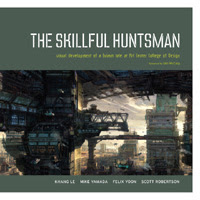 Much of the buzz about Art Center now revolves around its new entertainment design department, headed by Scott Robertson. His students were responsible for the recent book Skillful Huntsman, an exercise in production design that holds its own in print with publications by working professionals. Combining industrial design with illustration, students in this new major learn the skills they’ll need for visual development careers at the nearby movie studios, with classes often taught by instructors from DreamWorks, Disney, and Imageworks.
Much of the buzz about Art Center now revolves around its new entertainment design department, headed by Scott Robertson. His students were responsible for the recent book Skillful Huntsman, an exercise in production design that holds its own in print with publications by working professionals. Combining industrial design with illustration, students in this new major learn the skills they’ll need for visual development careers at the nearby movie studios, with classes often taught by instructors from DreamWorks, Disney, and Imageworks.The school now has a prop room, filled with costumes, mannikins, musical instruments, and everyday objects to use for staging an illustration. Students can check them out to take home, or models can pose with them in school.
Every Art Center student learns how to use woodshop tools. Here’s a display of working pull toys.
Illustration chair Ann Field typifies the exciting new spirit of the school, keeping right up with the times, but respecting timeless tradition. She told me that she respects the school’s duty to provide a strong foundation in traditional drawing and painting skills that can outfit a graduate for success in any career direction. “Some things will forever be true,” she told me. No matter how art and styles change, “you will always need to know how to paint and draw.”
Blog: Gurney Journey (Login to Add to MyJacketFlap)
JacketFlap tags: Museum Visits, road tour, Add a tag
The Museum of Jurassic Technology in Culver City, California, is a curio cabinet of obscure relics and extinct beliefs. "Jurassic" is metaphorical; no dinosaurs here.
We wandered in late on a drizzly day. No one else was there. A bearded attendant finally appeared from nowhere. He apologized for the smell of a dog-doo and incense (a dog had just had an accident). He directed us to watch an introductory slide show in a shrine-like alcove.
A voice began in sonorous tones describing how the word “museum” should be a place dedicated to the muses. We explored the dark, narrow rooms and hallways, passing through doorways framed with heavy Victorian curtains. The displays included.
- Micromosaics made from the scales of butterly wings.
- Stereo floral radiographs of Albert Richard.
- Vectography (an obscure 1940s technique for overlapping 3-D images)
- Microminiature figures carved by Hagop Sandaldjian, figures so small they easily fit inside the eye of a needle.
- A bell wheel, known as an arca musarithmica,
- And displays of forgotten folk cures, like two dead mice on a piece of toast given to a child to cure stuttering.
“Teaching,” quoting 18th Century museum pioneer Charles Willson Peale, “is a sublime ministry inseparable from human happiness. The learner must be led always from familiar objects toward the unfamiliar - guided along, as it were, a chain of flowers into the mysteries of life.”
Fodor's Review of the Museum
Blog: Gurney Journey (Login to Add to MyJacketFlap)
JacketFlap tags: road tour, Add a tag
Jeanette and I met and fell in love as art students 27 years ago in Los Angeles. Now that we’re here again, we’ve been visiting our old haunts to see how they’ve changed.
When we were engaged, we moved into the Golden Palm apartments in Highland Park. The Golden Palm, or “GP” as we affectionately called it, was a favorite apartment building for students at Art Center. The top floor was occupied almost entirely by art students, and the bottom floor was all working people.
It was no beauty then and it hasn’t gotten any prettier. Our apartment was next to a dumpster. Every morning a mother would lift her son into it to fetch out cans for recycling. They’d then crush the cans at six in the morning by driving back and forth over them with an old Chevy Impala.
When we stopped by yesterday, the grass was tramped to dirt, and we saw broken furniture piled up along Benner Street. There were bars on the windows, and dented vans parked outside with bumper stickers that said “Yo Soy El Army.” Like other places we’ve seen all across America, the rich places have gotten richer and the poor places have gotten poorer.
In the old days after sketching in downtown LA, we’d grab a bite at Philippe’s, home of the famous French dip sandwiches and five-cent coffee.
We expected it would be erased by time, but it was exactly as we remember it, with the sawdust on the floor, the long communal tables, the pickled eggs, and the circus posters. There were only two changes we noticed. Now they have wi-fi and a website. And the coffee now costs nine cents.
Blog: Gurney Journey (Login to Add to MyJacketFlap)
JacketFlap tags: road tour, Add a tag
The only downside about being on tour for so long is that home sweet home turns into a spookhouse. We hit the road in early October and just stopped home for a short Thanksgiving break. But the place looks neglected. The leaves are all down. Oak branches have fallen across the driveway. The grass never got its final cut. Small trees have sprouted from the soil in our gutters. Our Ankylosaurus keeps an eye on things. He’s looking seedy, too. The sculpt was originally made for an animatronic puppet that appeared in a Dinotopia CD Rom adventure game published by Turner Interactive in the mid ’90s. Remember when publishers had CD Rom divisions?
Our Ankylosaurus keeps an eye on things. He’s looking seedy, too. The sculpt was originally made for an animatronic puppet that appeared in a Dinotopia CD Rom adventure game published by Turner Interactive in the mid ’90s. Remember when publishers had CD Rom divisions?
Hiram is our caretaker. He’s supposed to get the chores done while we’re gone, but he’s been spending all day sitting around eating styrofoam peanuts. Here he is complaining about his arthritis. Hiram is actually a full-size puppet I made from an old cardboard box. He’s a nice guy but he tends to scare little kids.We realized we were out of firewood with winter coming on. So I got to work with the chainsaw cutting up downed wood. Franklin got the leaf blower working.
 Neither of us heard Jeanette shout when she saw a seven-foot rat snake sleeping on the top of the bush where she was raking. We let the snake sleep, poor guy. Rat snakes are pretty companionable critters, and aren’t too frisky this time of year. But in summertime when they’re feeling more chipper they’ve been known to climb up the side of the house alongside the chimney looking for robin hatchlings.
Neither of us heard Jeanette shout when she saw a seven-foot rat snake sleeping on the top of the bush where she was raking. We let the snake sleep, poor guy. Rat snakes are pretty companionable critters, and aren’t too frisky this time of year. But in summertime when they’re feeling more chipper they’ve been known to climb up the side of the house alongside the chimney looking for robin hatchlings.
Blog: Gurney Journey (Login to Add to MyJacketFlap)
JacketFlap tags: road tour, Art Schools, Add a tag
Syracuse University's art school has a long reputation for training artists and illustrators. Two of my heroes, Tom Lovell and Harry Anderson, graduated from Syracuse around 1930.The campus adjoins the city of Syracuse in the center of New York State. Its hilly location gives its students lots of exercise as they travel from class to class.
John Thompson heads the illustration program. His approach is traditional and realistic. We sat in on a class as he introduced an assignment on the theme of “inside and outside” He showed slides of compositional framing devices ranging from Titian to Bernie Fuchs.
He will lead a group of students to India this winter for a sketching tour. He told me that he was in no hurry for students to learn digital tools. At the undergraduate level, the focus is primarily on drawing and painting.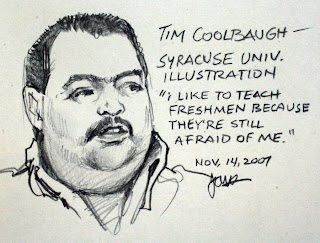 Our guide Tim Coolbaugh took us throughout the rest of the art building, a modern concrete structure at the edge of the quad. Lining the hallways were huge self-portraits showing faces contorted with laughter.
Our guide Tim Coolbaugh took us throughout the rest of the art building, a modern concrete structure at the edge of the quad. Lining the hallways were huge self-portraits showing faces contorted with laughter.
The walls upstairs displayed the results of a line drawing exercise taught by James Ransome, where students used markers to draw interior scenes with figures. They used white artist's tape to erase parts of the drawings as they reconsidered their lines and explored abstract shapes.Seniors occupied the tower rooms of the art building, which they customized with their supplies and works-in-progress.
Syracuse University also maintains the Special Collections Research Center, which has an impressive collection of artist’s papers and manuscripts, including cartoonist Roy Crane’s remarkable instructional scrapbook, assembled to guide his assistants in composition.After my presentation, I met several of the illustration instructors including, from left to right: London Ladd, Bob Dacey, and James Ransome, and Roger DeMuth (not in picture) all award-winning professional illustrators balancing their own artwork with their teaching.
Thanks and best wishes to all at SU!
Blog: Gurney Journey (Login to Add to MyJacketFlap)
JacketFlap tags: road tour, Art Schools, Add a tag
Most people think of RIT as a technical school for engineers and scientists. But it also has an impressive art and illustration program, which offers its students a skills-oriented course of study in a professional setting.The campus consists of rectilinear red brick buildings arranged on a large campus on the outskirts of the city. We arrived at the gallery of the art building, which was hosting an exhibition investigating the design of pop-up books. Each of the basic design principles of pop-ups was illustrated with a giant-sized corrugated plastic model that you could try out.
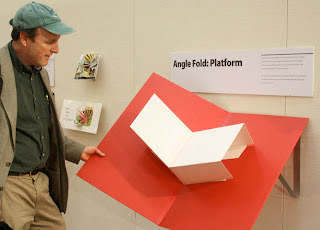 Illustration chairman Bob Dorsey toured us through the art building. He told us that illustration students concentrate on basic skills of drawing and painting for the first two years. When they begin using digital tools later in the program, the college insists on staying on the cutting edge, completely gutting and replacing the computer equipment with the latest technology every two and a half years.
Illustration chairman Bob Dorsey toured us through the art building. He told us that illustration students concentrate on basic skills of drawing and painting for the first two years. When they begin using digital tools later in the program, the college insists on staying on the cutting edge, completely gutting and replacing the computer equipment with the latest technology every two and a half years.RIT is one of only two institutions in America that offers comprehensive degree programs in medical illustration (the other is in Cleveland). Department Chairman Glen Hintz showed us tearsheets of alumni (above), and the room where students get artistic training in the area of human anatomy and physiology.
 The medical illustration program is closely integrated with the university’s biology department, and students have full access to cadavers and head-to-toe dissection.
The medical illustration program is closely integrated with the university’s biology department, and students have full access to cadavers and head-to-toe dissection.
To my knowledge, no school that I've seen yet offers a course specifically in animal anatomy for the artist—but I believe every art school should! If you know of such a school, shout it out on the comments.
RIT is also the home for the legendary School for American Crafts. For students interested in woodworking, metalworking, glassblowing, or ceramics (textiles were discontinued in the mid-90s), there is probably no better place to learn from modern masters. Illustration majors are able to sample from these resources as electives.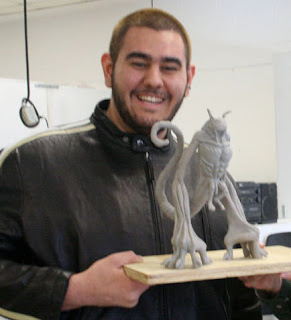 There are also programs in animation and sculpture or "dimensional" work. Here is a dimensional major named Matt, with his sculpture called the “Key Keeper,” an alien creature who walks on his fingers and holds his keys with his tail.
There are also programs in animation and sculpture or "dimensional" work. Here is a dimensional major named Matt, with his sculpture called the “Key Keeper,” an alien creature who walks on his fingers and holds his keys with his tail.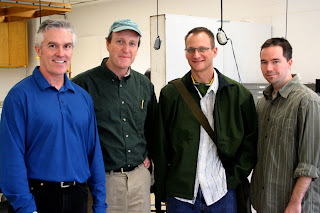 After my presentation on Dinotopia, I enjoyed talking with Bob Dorsey and the other members of the illustration faculty. These teachers obviously have great sympathy and respect for each other and a profound regard for their students. We’ve noticed that when all the teachers get along as friendly colleagues, the students benefit from the chemistry and the unity of vision, and they do their best work.
After my presentation on Dinotopia, I enjoyed talking with Bob Dorsey and the other members of the illustration faculty. These teachers obviously have great sympathy and respect for each other and a profound regard for their students. We’ve noticed that when all the teachers get along as friendly colleagues, the students benefit from the chemistry and the unity of vision, and they do their best work.
Thanks again and best wishes to everyone at RIT, and I wish I had had more time to visit with you!
Blog: Gurney Journey (Login to Add to MyJacketFlap)
JacketFlap tags: Watercolor Painting, road tour, Journey to Chandara, Add a tag
Yesterday morning the rain kept pouring down as we endured the rush hour traffic into Albany, New York for an interview on public radio. We got to the station 45 minutes early, with plenty of nervous energy to burn off.
We parked Trusty Rusty in view of the WAMC headquarters and its performance hall, a retrofitted old bank building on Central Avenue. I started a watercolor sketch of the streetcorner, while Jeanette cast on another knitted sock onto her bamboo needles. I had to fire up the defroster and wipers every ten minutes or so to keep the windshield from fogging up.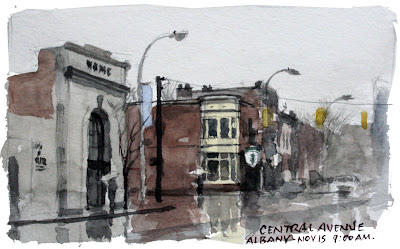 I take back what I said yesterday about watercolor being impossible on rainy days. The comforts of the car interior is better than getting a steady soaking outside. Here’s the sketch in my mini-Moleskine, using the Schmincke sepia, light red, ultramarine, and yellow ochre.
I take back what I said yesterday about watercolor being impossible on rainy days. The comforts of the car interior is better than getting a steady soaking outside. Here’s the sketch in my mini-Moleskine, using the Schmincke sepia, light red, ultramarine, and yellow ochre.
We suddenly remembered to tune the radio to WAMC. As I put on the last touches to the sketch, the hosts Joe Donahue and Julia Taylor introduced the segment: “Next we’re going to take a journey into a world of fantasy with artist and author James Gurney…” I rushed in to the studio with a cup of coffee and my sketchbook still in my hand.The on-air room was lined with foam waffles, and the microphones swung out from spidery arms. Even though the show is called “The Roundtable,” the table is actually elongated. The engineer behind the glass flashed a hand with five fingers—was that five seconds or five minutes? Joe and Julia were completely relaxed and friendly, but intensely focused, always in the moment. They write the intros, segues, and questions the day before, Joe told me. But they depart from the written script on a whim.
It’s the interviewer’s job to get the guest beyond his prepared answers, and the guest’s job to get the interviewer beyond his prepared questions. They were fun to talk to, and got me thinking about aspects of Dinotopia that I hadn't touched in an interview before.
Today I do two more interviews: an in-studio chat at WKZE and a phoner from LA to plug the Art Center gig.
Blog: Gurney Journey (Login to Add to MyJacketFlap)
JacketFlap tags: Pen and Ink, road tour, Add a tag
I welcome being stuck at a laundromat because it means finding a “non-motif.”
You know how it is when you’re driving along looking for a picturesque subject to sketch. You never find it. Everything rushes by too fast as you look out the car window. Being plunked at a laundromat forces you to make the most of wherever you find yourself. Instead of a typical artistic motif, like a barn or a fishing boat, you have the chance to paint a non-motif, which is always more interesting.Yesterday we spent a couple of hours at Benny’s Coin Laundry in Geneva, Ohio. All sorts of magnificently ordinary subjects presented themselves. Jeanette did a pen sketch of the Hong Kong King Buffet across the street.
I followed the ninety degree rule and faced toward a cell tower and a telephone pole. A guy came out of the laundry and said, “I’ve lived here 25 years, and I’ve never seen an artist painting the CVS.” He told us about how the old dance hall above the general store still has its parquet floor and gas lamps, but it is going to be cut up into apartments.
I used a Kuretake water brush pen. It comes in several sizes and has a tip of nylon fibers. I filled the clear plastic handle not with water but with the same Waterman brown ink that I use in my Waterman fountain pen, which I used for the line work. A second Kuretake holds a lighter tone of ink.
I had never really studied a cell tower before. This was the self-supporting kind, unlike the monopole or the guyed tower.
As we drove away, everything looked paintable, and I had to tear myself away from this one, a fast food sign in front of an abandoned Carnegie library. Non-motifs are all these candid vistas we take for granted in our everyday surroundings. They're attractive not because they are ugly or beautiful, but simply because they're there. They are the ubiquitous universe that we look at but rarely see.
Blog: Gurney Journey (Login to Add to MyJacketFlap)
JacketFlap tags: road tour, Add a tag
Here I am on my way to a day’s work at Gallery One in Mentor, Ohio, one of the premier galleries for art prints and originals. I gave my Magic Marker presentation to a very smart group of young people. Last night I shared the behind-the-scenes PowerPoint show.
This is Kyle, who told me, “I want to be an illustrator by day and a boxer by night. In the afternoon I can rest.” I drew a picture of a T.rex versus a strutter in his book, while he sketched up the clash betweeen Godzilla and Space Godzilla.
A fun surprise was meeting the one and only Azonthus (of the Dinotopia Message Board) and her husband Greg. They showed us great photos of their wedding album.
And why do you suppose I'm smiling? Because Sue gave me a beautiful fossilized animal dropping, known as a coprolite. It was about 20 million years old, so it had turned to stone, but it looked as real as something you'd find in the park, and a lot of the kids didn't care to touch it. Of all the kinds of direct evidence of dinosaurs and ancient mammals—bones, footprints, even skin impressions—coprolites really make them come to life. Thanks, Sue!
Blog: Gurney Journey (Login to Add to MyJacketFlap)
JacketFlap tags: Portraits, Pen and Ink, road tour, Add a tag
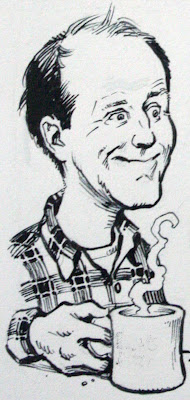
We stopped at a breakfast place along U.S. Highway 20 called the Country Table. It was filled with guys with plaid shirts and women with dyed hair. Whenever there was a booth occupied by a group of men or a group of women, they were always huddled close, chattering happily away.
But whenever a husband sat with his wife, silence prevailed. There were no words, just dull chewing. It's the same everywhere, not just here. How is it possible to share a whole meal with someone without talking?
Before I got married I used to worry that after a few decades my wife and I would run out of things to say. But so far that hasn’t happened. Our conversation probably isn’t that interesting. We repeat ourselves endlessly. But so far at least we don’t suffer from "dead air syndrome."
Blog: Gurney Journey (Login to Add to MyJacketFlap)
JacketFlap tags: Watercolor Painting, road tour, Add a tag
Yesterday morning was ideal for sketching, with fleecy clouds rolling in. We set up our chairs on the front lawn of a medical office and got to work with the watercolors: Jeanette with her Lukas set, and me test-driving a new Schmincke mini set (thanks for the recommendation, Dennis Nolan).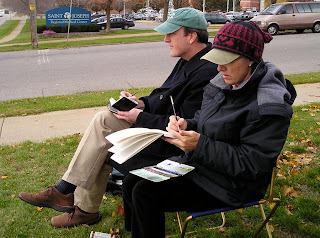 I was trying to capture the effect of contre-jour lighting, which meant painting around the little sparkly bits of edge lighting. I probably could have used Maskoid or Liquid Frisket for this task, but didn’t have any.
I was trying to capture the effect of contre-jour lighting, which meant painting around the little sparkly bits of edge lighting. I probably could have used Maskoid or Liquid Frisket for this task, but didn’t have any.I tried to blend various colors into the shadow areas, while keeping the intensities muted. Colors are more saturated or vivid when the sun is at your back, and more neutral when you're looking toward the sun. I also avoided putting too much detail or linework in the picture, which would weaken the simple backlight effect.
 On the drive up old highway 31 from Indiana into Michigan, there were plenty of gloriously tacky roadside artifacts, like this classic motel sign.
On the drive up old highway 31 from Indiana into Michigan, there were plenty of gloriously tacky roadside artifacts, like this classic motel sign.
Up in Three Rivers, Michigan, I did a presentation at the Carnegie Center for the Arts, which hosted a Dinotopia original art exhibition ten years ago. Tom Lowry of Lowry’s Books arranged this booksigning event. The great thing about a road-trip book tour is that you can visit towns like Three Rivers that just don't get visiting authors because they're too far from the big city airports. Readers of this blog will be interested to know that Amy (above, center left) and her family came all the way from Dearborn. Amy was one of the two winners of the “Art History Simplified” contest a few days ago!
Readers of this blog will be interested to know that Amy (above, center left) and her family came all the way from Dearborn. Amy was one of the two winners of the “Art History Simplified” contest a few days ago! I also was honored to meet Sean, who started writing me fan letters more than four years ago. We’ve exchanged quite a few letters since then. Sean’s copy of the original Dinotopia book gets the prize for “most loved.” Thanks, everybody for coming and making the event a success.
I also was honored to meet Sean, who started writing me fan letters more than four years ago. We’ve exchanged quite a few letters since then. Sean’s copy of the original Dinotopia book gets the prize for “most loved.” Thanks, everybody for coming and making the event a success.
Blog: Gurney Journey (Login to Add to MyJacketFlap)
JacketFlap tags: Watercolor Painting, road tour, Add a tag
Jeanette and I paused in Valparaiso, Indiana to recharge our art batteries. Valparaiso is the county seat of Porter County, but not many tourists come here. The library has a fabulous collection of art books and there’s an art museum on the university campus of that we’ll check out tomorrow. Today it’s time for sketching.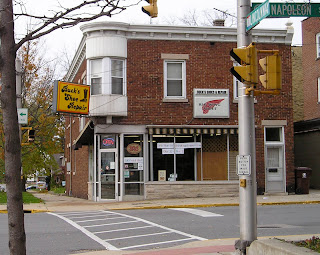 We picked this streetcorner: a shoe store in a brick building with a round turret. Here’s how it looked to the camera.
We picked this streetcorner: a shoe store in a brick building with a round turret. Here’s how it looked to the camera.
I tried a sepia sketch in the mini-Moleskine watercolor book, using a few washes of tone and then some brown Waterman ink sketched with a fountain pen. Then I added a wet wash here and there to melt the linework, releasing its inner red tone.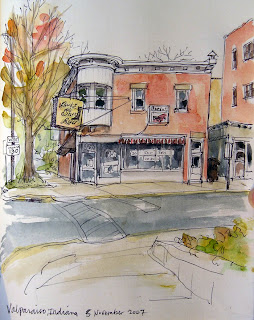 Here’s Jeanette to describe her painting: “I did a pencil sketch in my sketchbook (laid-finish paper), then put down some watercolor. I went back in with a ballpoint pen when the color was dry.”
Here’s Jeanette to describe her painting: “I did a pencil sketch in my sketchbook (laid-finish paper), then put down some watercolor. I went back in with a ballpoint pen when the color was dry.”
Our fingers got cold from the November weather, so we tucked into a wi-fi café for soup and coffee. An elderly fellow sat near me and hauled out his laptop. Sitting duck, thought I.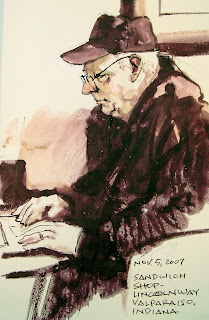
Blog: Gurney Journey (Login to Add to MyJacketFlap)
JacketFlap tags: road tour, Add a tag
Blog: Gurney Journey (Login to Add to MyJacketFlap)
JacketFlap tags: Museum Visits, road tour, Journey to Chandara, Add a tag
Today the Oshkosh Public Museum opened its exhibition of 49 original paintings from Dinotopia: Journey to Chandara.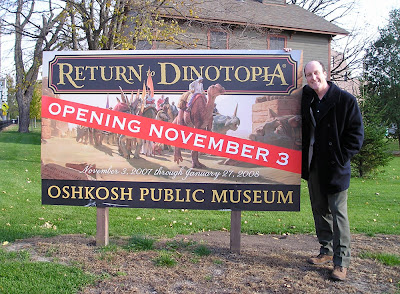 Here’s the sign outside museum. There were also buses with Dinotopia banners, local school events, a signing at the Apple Blossom Bookstore, and reading lists at the library, thanks to the tireless organizing efforts of the museum’s assistant director Mike Breza and members of the community here in Oshkosh, Wisconsin.
Here’s the sign outside museum. There were also buses with Dinotopia banners, local school events, a signing at the Apple Blossom Bookstore, and reading lists at the library, thanks to the tireless organizing efforts of the museum’s assistant director Mike Breza and members of the community here in Oshkosh, Wisconsin. Performers from the Cirque du Soleil were present in costumes that matched the “Liners” illustration from the Dinotopia book. Here they are posing next to the original painting “Spotters and Liners.”
Performers from the Cirque du Soleil were present in costumes that matched the “Liners” illustration from the Dinotopia book. Here they are posing next to the original painting “Spotters and Liners.”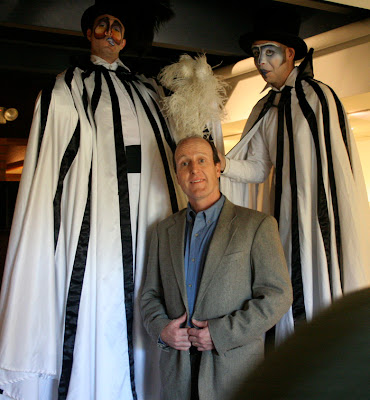 The stiltwalkers made an impressive sight as they walked nimbly up and down the grand staircase, while jugglers managed up to five pins in the lobby.
The stiltwalkers made an impressive sight as they walked nimbly up and down the grand staircase, while jugglers managed up to five pins in the lobby.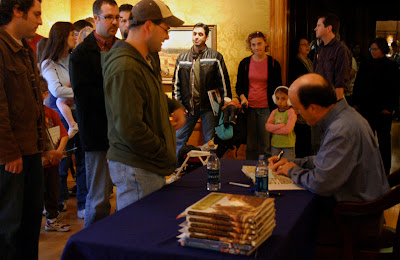 Thanks to everyone at the museum and to all of you who came to say hello and have your books signed. I’m especially grateful for those of you who drove from far away to attend the opening.
Thanks to everyone at the museum and to all of you who came to say hello and have your books signed. I’m especially grateful for those of you who drove from far away to attend the opening.
Blog: Gurney Journey (Login to Add to MyJacketFlap)
JacketFlap tags: Animals, road tour, Add a tag
Whenever I see a road kill I want to look away. But I also want to look.
What kind of critter bit the dust? Did he suffer?
I saw this one on County Route 16. Did a double then a triple take. Something was wrong. Nothing has blue guts.
Close inspection revealed it was a stuffed animal. Cat, most likely.
Which set me to pondering. What was a stuffed animal doing crossing the highway? Was his stuffed-animal family waiting in the bushes, crying for him? Is there a whole village of stuffed animals in quilted calico houses hidden there past the swamp?
Hmmm. Material for a story. You take it and run.
Blog: Gurney Journey (Login to Add to MyJacketFlap)
JacketFlap tags: road tour, Journey to Chandara, Add a tag
A weird thing happened at 6:32 p.m. at the rest stop on the north side of I-90 near Angola, New York. We were stopped to look at a map and we heard someone doing something at the back of the car. We saw a guy with a long brown coat jog off past the dog walk area into the forest.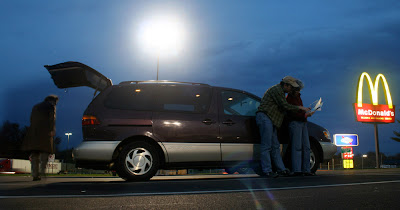 We checked and nothing seemed to be taken from the back of Trusty Rusty, but there was a little note on top of the load. It was kind of creepy—some crackpot stalker apparently trying to take credit for Dinotopia: Journey to Chandara.
We checked and nothing seemed to be taken from the back of Trusty Rusty, but there was a little note on top of the load. It was kind of creepy—some crackpot stalker apparently trying to take credit for Dinotopia: Journey to Chandara.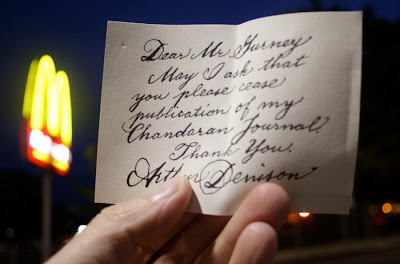 I guess you can expect anything on Halloween, but how would this guy, whoever he is, know where we were at that moment?
I guess you can expect anything on Halloween, but how would this guy, whoever he is, know where we were at that moment?
Blog: Gurney Journey (Login to Add to MyJacketFlap)
JacketFlap tags: road tour, Pencil Sketching, Add a tag
Today it's Off to Oshkosh. We start the long drive west toward Wisconsin. Sorry to miss Halloween back home, but I'm looking forward to the next part of the road tour.
View Next 3 Posts



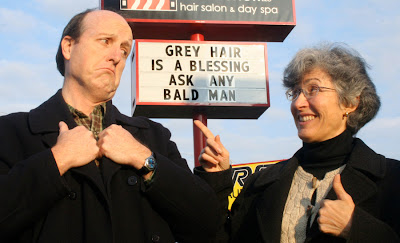
james is it intimidating going to the biggest art studios and schools all across the united states? i can remember how intimidated i was just in painting class with a group of other great artists. i cant imagine what it might be like going to see and present infront of the best students and artist working in the united states every week, and somtimes twice a week or more. thats nuts!
by the way how did this tour form. it seemed like it was a tour to start off the new book. but now seems to be going in the direction of schools and huge art studios?
did you plan to tour these studios and schools and why did you choose studios and schools to present the new book. instead of the regular museams and bookstores?
hope i'm not being nosey. just very curious and jealous!
thanks
e
Good questions, Big E, and I should explain:
The Chandara tour has been a very different kind of tour, because I organized it, not some disinterested publicist. Lecture fees and book sales funded the transportation and food expenses of the trip, while the publisher generously agreed to pay for hotels.
I chose art schools because I was curious how art is being taught these days, and I chose movie studios because I knew that some of the most gifted artists work at those places.
For some reason I don't feel intimidated by being around incredibly good artists--I just feel lifted up by talking to them and seeing their work.
I loved working at DreamWorks, and it wasn't just the 30lbs I gained there (ha! No freshman 15 at my current job at Google). What both companies have in common is a sense of providing a kind, productive atmosphere for professionals in their fields.
Well, we were absolutely thrilled to have you visit and I have to say to Big E that if there was any intimidation it went the other way around.
Yes, the free food at Dreamworks is fantastic but you should've seen it when the studio opened it's doors a decade ago. To draw talent and goodwill the food was utterly lavish with fresh baked desserts everyday at 3 and a freezer always full of Haagen Dazs bars. I honest to goodness quit eating dinner, having filled my calorie requirements before I got home.
I appreciated the industrial sketch having spent many lunchtimes sketching in that area. You might enjoy the blog of Mike Hernandez one of our art directors. If you go into his archives, he has some of the most beautiful industrial sketches I've seen. http://mikehernandez.blogspot.com/
Thanks again and Happy Holidays!!